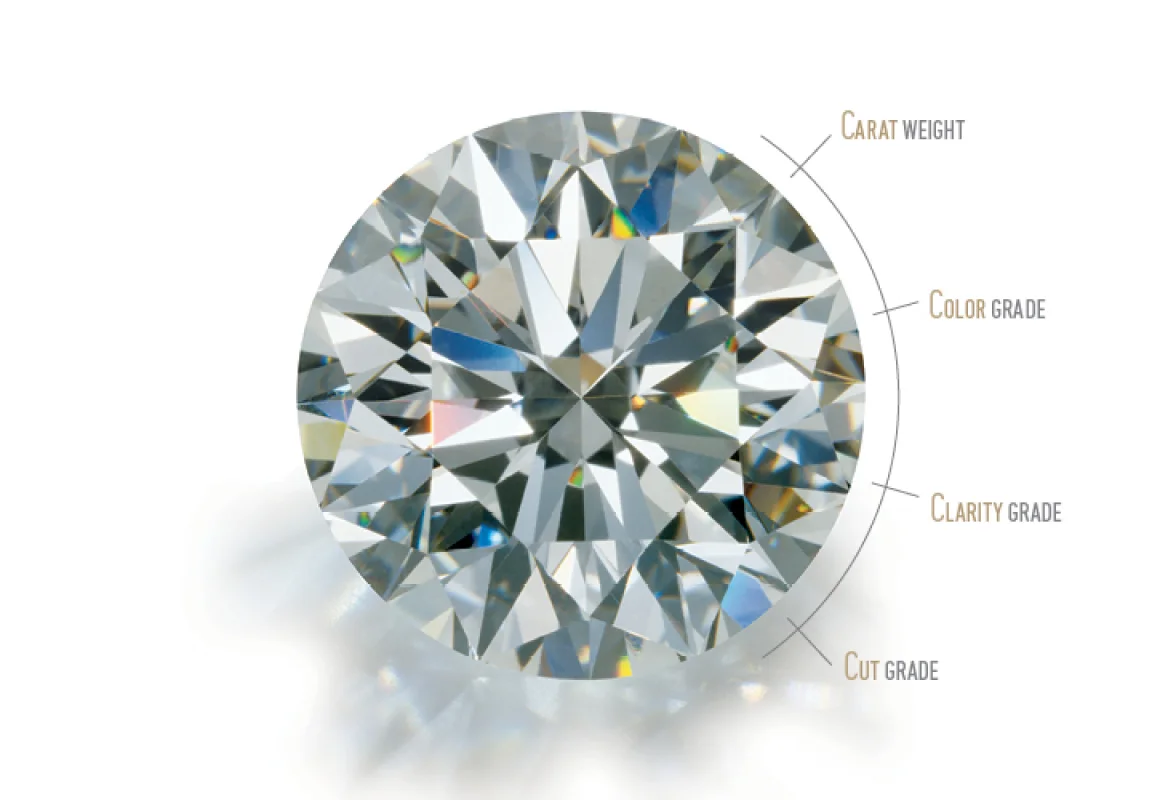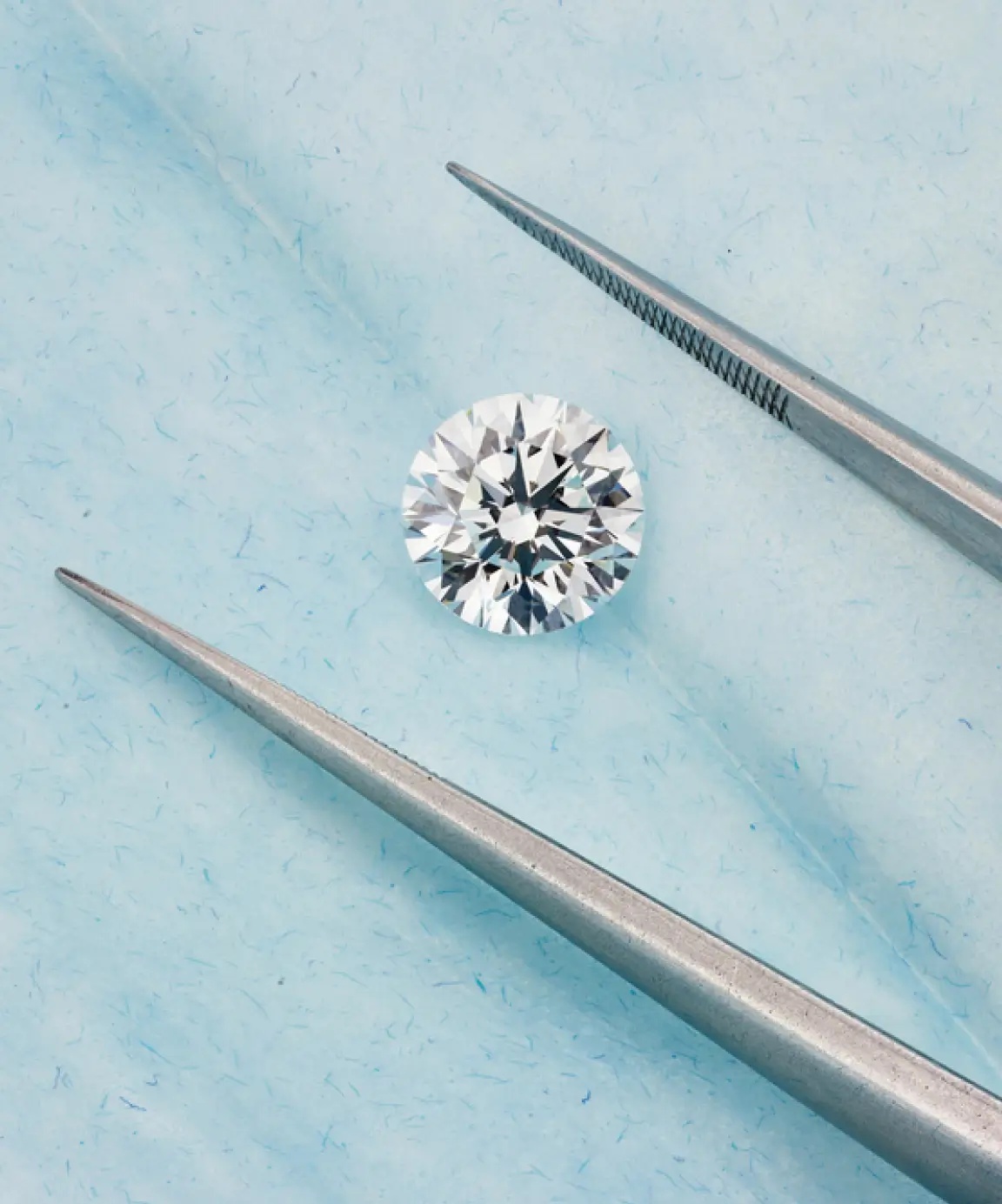To pick a diamond, you must understand the intricacies of diamond grading to choose the right jewelry. The best way to narrow down to your favorite and unique stone is by concentrating on the most important factors and buying a gem that meets your exact goals. Every diamond is unique, and the price may affect it because of several factors. A quick understanding of the ins and outs of a diamond grade can best help you with the selection process.
TABLE OF CONTENT
What is Diamond Grading?
All polished gems are valuable, yet many factors influence their worth. Rarity is one of the major diamond grading factors, as gems with certain characteristics are rarer and more valuable than those without them. That is why jewelry professionals evaluate and discuss these factors in an organized manner. Otherwise, it would be impossible to comprehend the diamond grade system. And there would be no way to evaluate and discuss the characteristics of a gem.

Gemologists and experts have been using a diamond grading system that includes four key factors to categorize and recognize the diamond grade: clarity, color, cut, and carat, more popularly known as the 4 C's.
What are the 4 C’s in Diamond Grading?
The 4 C's, when used together, refer to the quality of the final gem. This combination determines the worth of the stone. The rarity of one or more of the 4 C's influences the value of a gemstone and the diamond grade. Most diamonds have yellow or brown tinges, making colorless diamonds rare.
As a result, a colorless gemstone scores higher on the diamond grading color scale than a light yellow diamond. Rarity and value are interlinked; therefore, a colorless diamond is more valuable and rare than one with a faint hint of yellow. Clarity, cut, and carat all share the same rare value relationship in the diamond grade system.

Due to diamond grading, one can observe the stone's value based on its characteristics, which the 4 C's put forth. Jewelry industry professionals can now define and assess individual diamonds as the 4 C's in their common lingo.
Cut
The cut is, without a doubt, the most significant C. You buy a diamond for its brilliance; the cut of your gem, which directly affects how much sparkle it has, is by far the most crucial aspect. The cut is the most significant factor compared to color, clarity, and carat. It is a factor that determines how bright your gem will be.
A diamond cut is a design manual or guide used to polish, balance, and provide symmetry to the gemstone. A diamond's brilliance is significantly influenced by its cut, so a poorly cut stone will appear less brilliant. The cuts make the diamond's beauty and brilliant shine possible. For instance, the ratio of the gemstone's depth to its diameter is a minute yet crucial element that can determine the diamond's beauty and price.
The gem's design and artistry are also taken into consideration when determining the diamond's cut grade, as well as the diamond's weight concerning its diameter, the girdle thickness (which impacts the sturdiness of the diamond), the symmetrical facet arrangement, and the level of polish on them.
Color
We envision a clear or colorless gemstone when we think of a diamond. A colorless gemstone, however, is extremely rare. Due to their rarity and high cost, colorless diamonds are among the most expensive.
Choosing the right jewelry comes with understanding the diamond grade color scale. The evaluation of a diamond’s color is actually based on the lack of color. Gemstones with the same colorlessness as a drop of colorless water that are structurally perfect have greater value. GIA's D-to-Z color diamond grading system is a grading scale that measures a stone with color values that showcases the specific lighting and observes the conditions to evaluate the level of colorlessness and determine its color value.

Clarity
We must first understand the process of diamond formation to recognize its clarity. They are naturally formed when carbon is subjected to intense heat and pressure in the earth's interior. Numerous internal characteristics referred to as "inclusions" and external factors referred to as "blemishes" may be produced due to this process.
The number, size, relief, type, and position of these characteristics must be considered when assessing its clarity and how they affect the stone's entire look. Remember that no diamond is completely pure; there is always a certain amount of inclusions or blemishes that are not visible to the naked eye if you're trying to decide what level of clarity is best for you.
The Clarity Scale has six categories that includes Flawless and Internally Flawless which are the ideal clarity for a diamond, then comes Very, Very Slightly Included and Very Slightly Included which is a fair level for the gemstone and finally Slightly Included that falls in the last tier on the clarity scale. This showcases the level of inclusions present in the gemstone. The clarity drops as the list goes on. But the clarity improves as it approaches purity.
Carat
"Carat" refers to the stone's weight rather than its size, as most people think that a gemstone with a higher carat is preferable to one with a lower one. A gemstone's size is affected by its carat but is not directly correlated with its carat; the cut is what adorns the diamond grading, giving it its beauty and sparkle. The gem’s price increases with the carat and carat size. The price can rise more sharply the larger the carat because larger stones are much more valuable than smaller ones and are harder to find.
What is the Significance of Diamond Grade Certification?
A diamond grade certification is crucial, as it is a valid document that describes the credibility of the diamond grade. All gemstones should be certified because it verifies and describes the item you are purchasing.
Diamond grading certificates are typically intended for the final consumer. The cut quality, color grade, carat, and other specifics regarding the diamond grade are included in a diamond certificate. Documentation for your purchases is crucial, especially when shopping for a solitaire.

Lastly, you can find the gemstone that you desire at Friendly Diamonds, a New York-based online jewelry store; that provides lab-grown diamonds that are eco-friendly and sustainable. Renowned diamond grading organizations like IGI, GIA and GCAL certify each gem, and each one is accompanied by a certificate outlining the 4 C's of the ideal diamond grade.
















